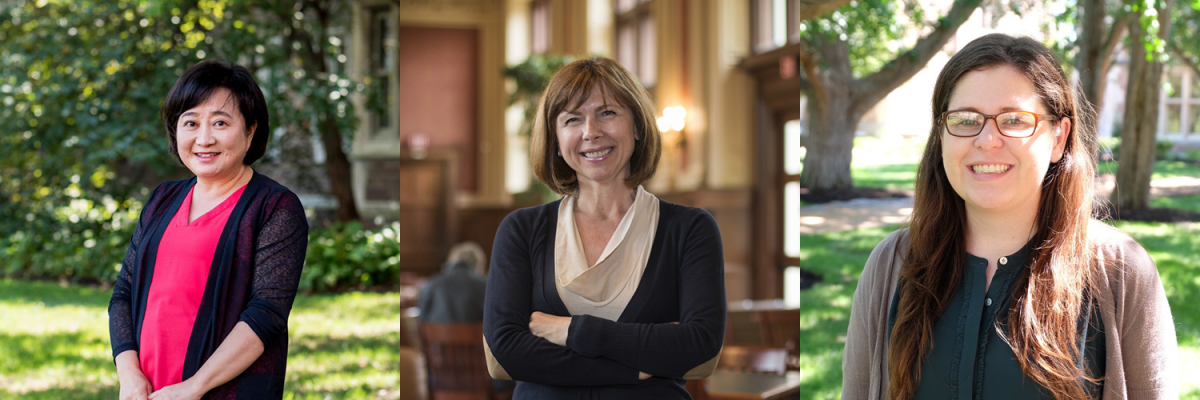A recent conference invited language instructors from across Arts & Sciences to discuss challenges and opportunities unique to the foreign language classroom.
Three years ago, Mijeong Mimi Kim, Iva Youkilis, and Meg Gregory came together with an idea. As teaching professors of Korean and Italian, respectively, Kim and Youkilis sought to provide instructors a space for learning from each other about issues specific to teaching foreign languages. Together with Gregory, senior assistant director of educational development with the Center for Teaching and Learning, they initiated the annual Language Teaching Fair.
This year’s event, held virtually Aug. 26, proved especially helpful for providing a place to discuss the challenges and lessons learned from teaching during the COVID-19 pandemic. Over 50 participants from nine departments attended the conference, where they learned from peers who adapted to teaching virtually by embracing innovative teaching methodologies. Topics from this year included lessons learned from creating a French for the Medical Professions track and an exploration of vlogging as a tool for learning during the pandemic.
“As a group of instructors all working in foreign languages, we are facing very similar challenges,” said Youkilis. “Each language fair has dealt with the challenges that we faced at the time. Before the pandemic, we talked about diversity and disability, and over the past two years we have talked a lot about technology in the classroom.”

Even before the pandemic, technology was central to the concerns of many language instructors on campus. Technological tools offer language teachers a way to increase the amount of individual attention that they provide to students, which can be particularly important when developing language skills. In February 2020, Kim, Youkilis, and Gregory organized an event on using Canvas in the classroom, a month before the campus would move to distance learning due to COVID-19.
Kim describes foreign language classrooms as the “gateway for students to learn about other cultures.” In order to facilitate both cultural and linguistic communication, teachers must first meet students where they are – often with the help of technology.
“In Korean, we teach five levels of language courses with students from very diverse backgrounds,” explained Kim. “I found early on that technology can help me differentiate instruction according to student aptitude and motivation. I can tailor the instruction I give to individual students rather than give a blanket curriculum to everyone in the class.”
The annual conference also introduces new language instructors to their peers and provides existing instructors with opportunities to learn from each other. “Cross-departmental, informal collegial conversation is a critical aspect of the Language Teaching Fair,” said Gregory.
As the conference enters its fourth year, its organizers have big ambitions. They would like to have more conversations about heritage language learning at WashU, asking instructors and students to share their experiences with courses for heritage language learners who might speak a language at home but have little formal training in the written form of the language. They would also like to do more community outreach with students.
For more information about the Language Teaching Fair, visit the Center for Teaching and Learning.



